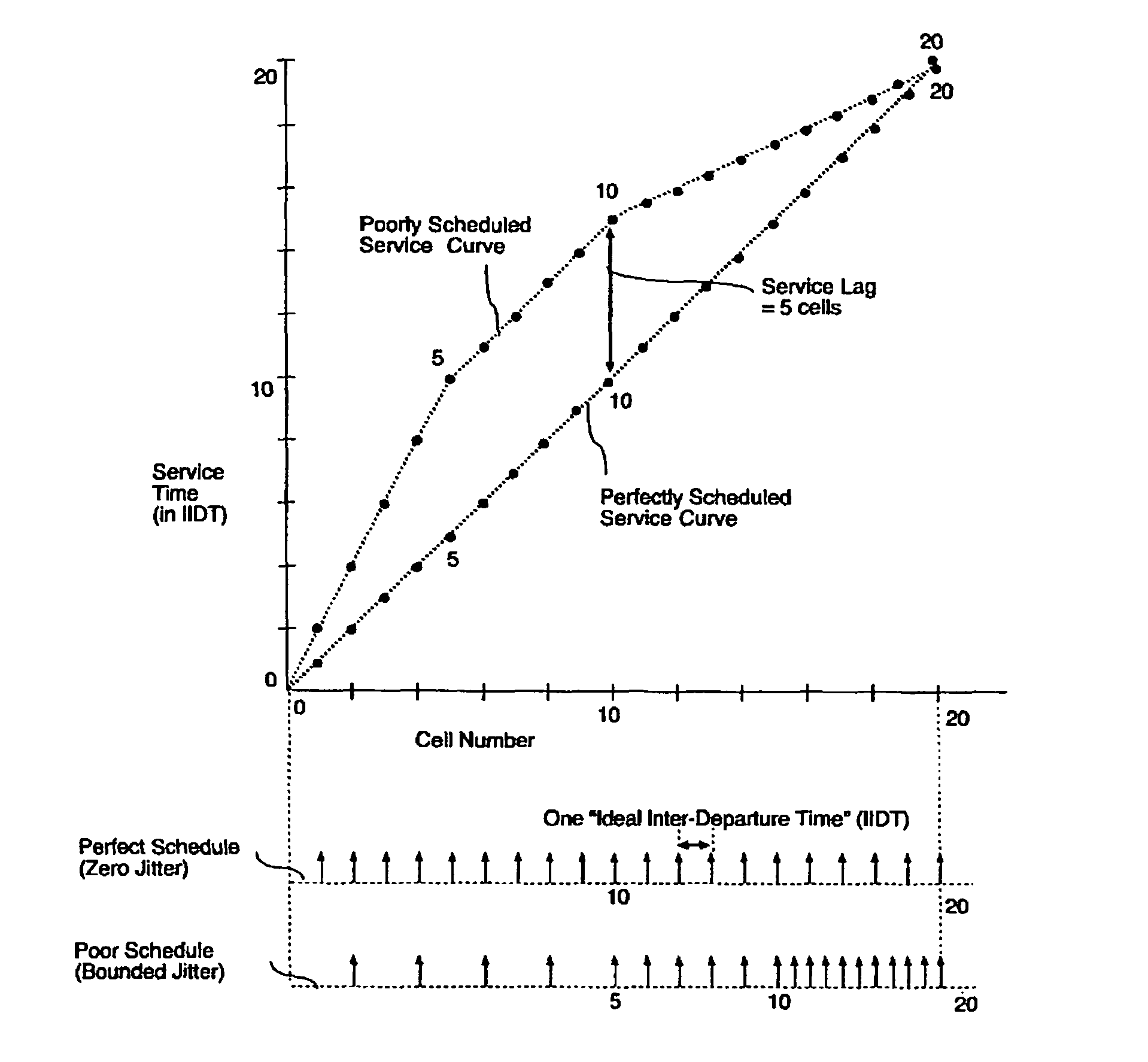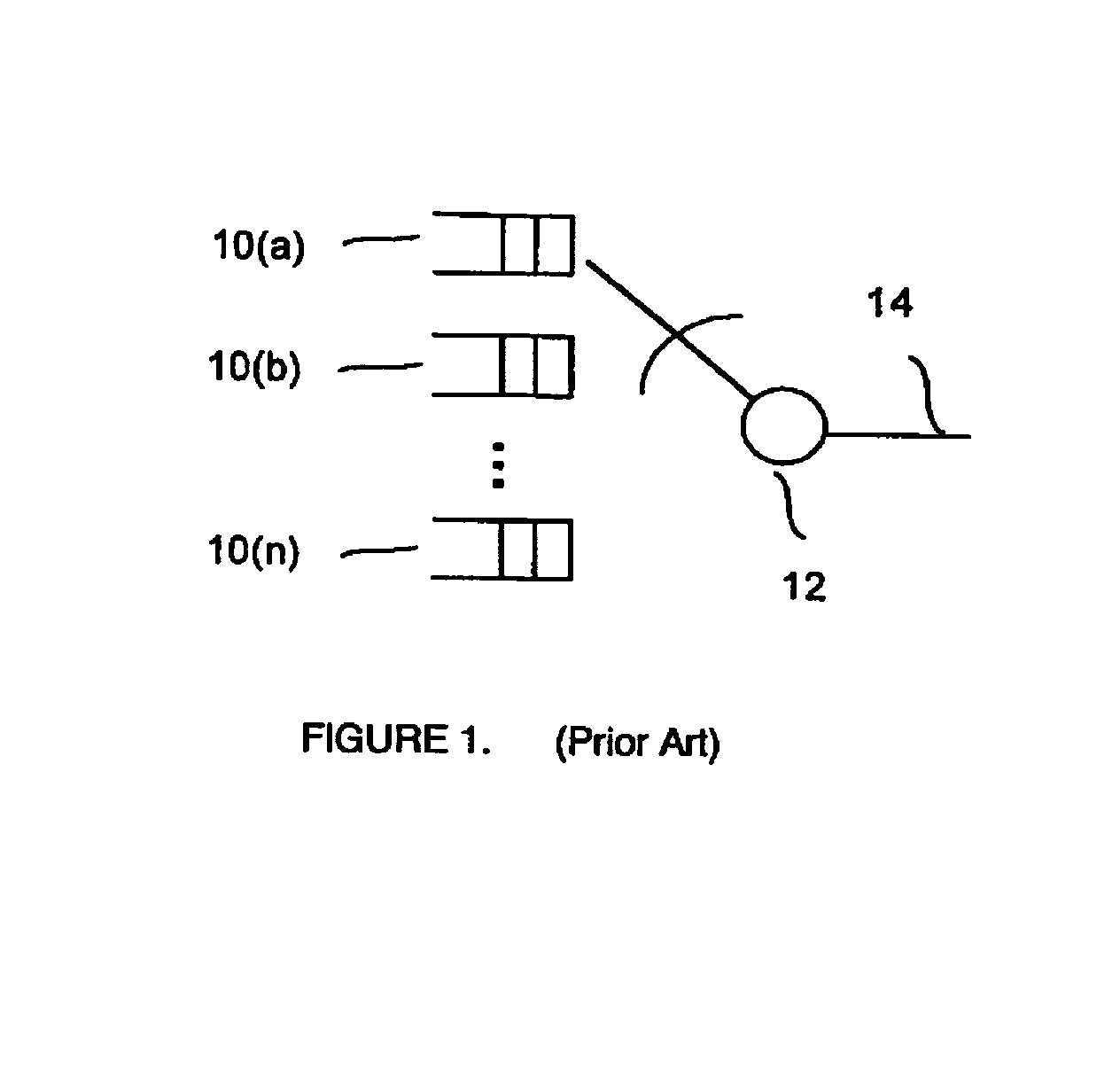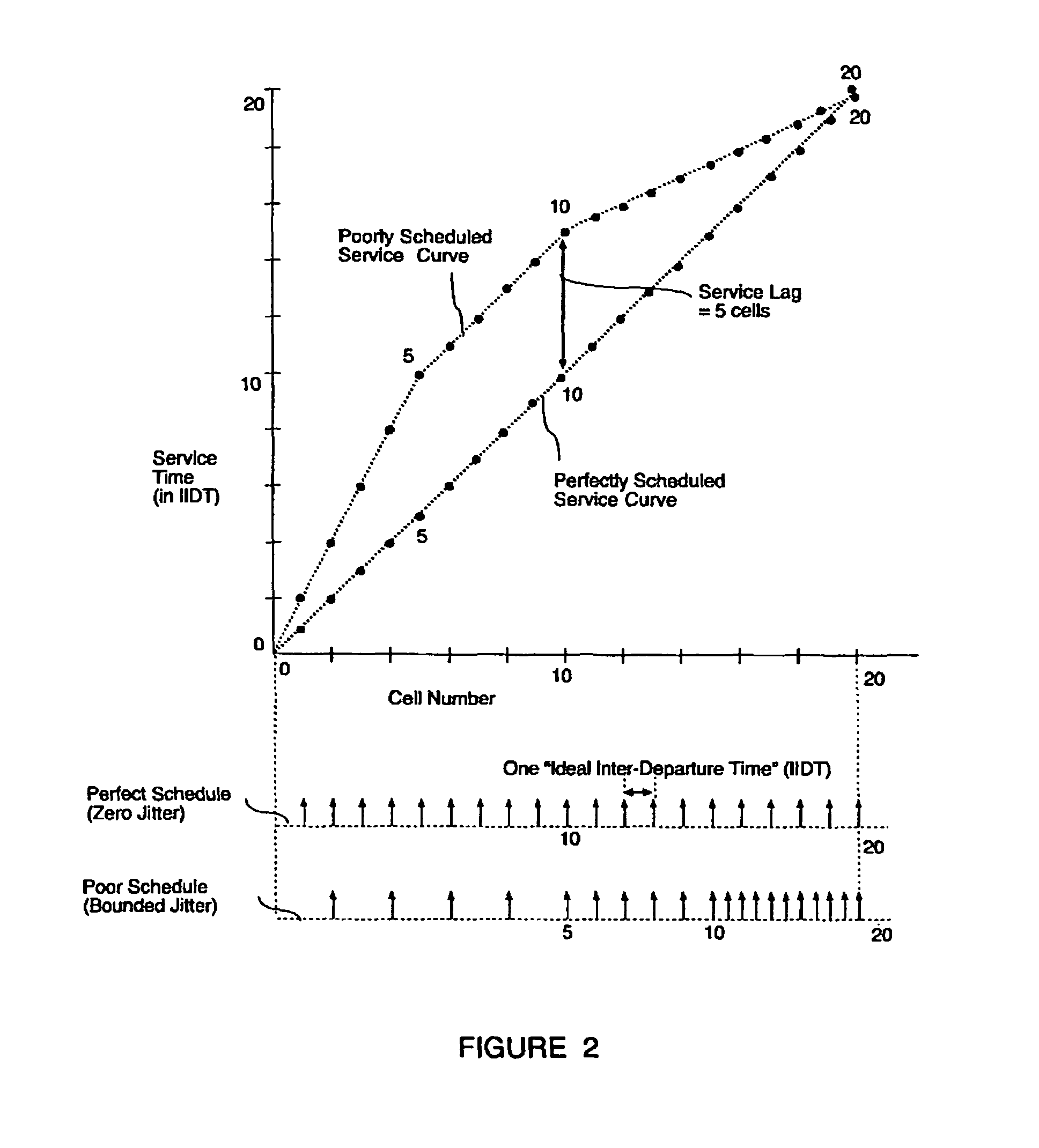Method to schedule multiple traffic flows through packet-switched routers with near-minimal queue sizes
a packet-switched router and traffic flow technology, applied in data switching networks, frequency-division multiplexes, instruments, etc., can solve the problem of unnecessarily large queue size of server scheduling algorithm with a maximum normalized service lag of unnecessarily large, and achieve near-minimal queue size, reduce queue size, and minimize queue size
- Summary
- Abstract
- Description
- Claims
- Application Information
AI Technical Summary
Benefits of technology
Problems solved by technology
Method used
Image
Examples
example
A Bounded Jitter with an Unbounded Service Lag
[0086]This example will illustrate that a bounded jitter between cells in a traffic flow does not imply the same bounded normalized service lead / lag for the traffic.
[0087]Referring to FIG. 2, consider two traffic flows each with an average rate of 10 cells per 50 time-slots, so the IIDT(f)=5 time-slots between cell services on average. Let the maximum jitter be 5 time-slots, therefore the maximum time between the service of 2 cellsth time-slot. The second traffic flow experiences large jitter for the first 5 cells, followed by perfectly-spaced service for the next 5 packets, followed by accelerated service for the last 10 packets.
[0088]For the second flow, let the service time of cells j=1 . . . 5 equal (j-1)*10+1, i.e., cells 1-5 receive service at time-slots 10, 20, 30, 40, 50, reflecting the fact that the jitter is bounded by 5 time-slots. Let the following 5 cells receive service with perfect IDT, i.e., cells 6-10 receive service at ...
PUM
 Login to View More
Login to View More Abstract
Description
Claims
Application Information
 Login to View More
Login to View More - R&D
- Intellectual Property
- Life Sciences
- Materials
- Tech Scout
- Unparalleled Data Quality
- Higher Quality Content
- 60% Fewer Hallucinations
Browse by: Latest US Patents, China's latest patents, Technical Efficacy Thesaurus, Application Domain, Technology Topic, Popular Technical Reports.
© 2025 PatSnap. All rights reserved.Legal|Privacy policy|Modern Slavery Act Transparency Statement|Sitemap|About US| Contact US: help@patsnap.com



